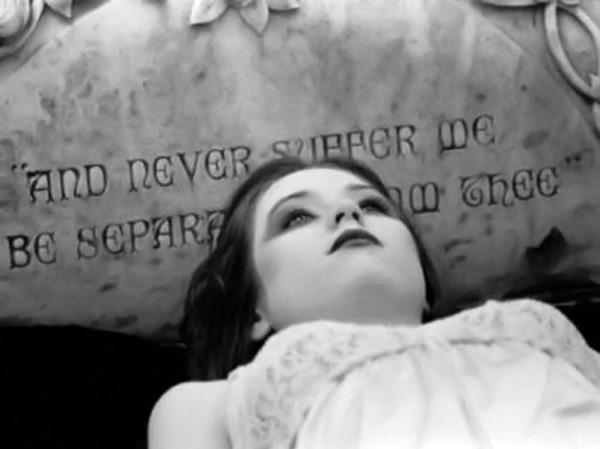908
Sopor
It is believed that a person of normal sleep duration is 6-8 hours. But sometimes the line between normal sleep and sleep caused by stress, is too thin.
We are talking about lethargy (Greek. «Lethe» - forgetfulness and «argia» - inaction), a painful condition similar to sleep and is characterized by immobility, lack of response to external stimulation and the absence of external signs of life. Fall into a lethargic people are always afraid, because there was a danger of being buried alive.

The famous Italian poet Francesco Petrarca, who lived in the XIV century, at the age of 40 years was seriously ill. Once he lost consciousness, he was considered dead and buried going. Fortunately, the law at the time forbade burying the dead sooner than one day after the death. Waking up is almost at his grave, Petrarca said he feels great. After that, he lived another 30 years.
When porting old European cemetery in which the tombs make spot checks found that a quarter of all the dead, who were buried, then came to life again. The position of the bodies in coffins clear that the "dead" soon after the funeral, unsuccessfully tried to get out of the grave. In 1838, in one of the English villages incredible event occurred.
During the funeral, when lowered into the grave coffins and began to dig out of the coffin came some obscure sound. While the cemetery frightened workers came to their senses, dug the coffin and opened it, it was too late: under the hood, they saw frozen in terror and despair face. A shroud torn and bruised hands showed that it is too late.
In Germany in 1773 after the screams coming from the grave was exhumed pregnant woman buried the day before. Witnesses have discovered a brutal struggle for life: the nervous shock buried alive triggered premature labor and the baby suffocated in his grave with his mother.
Well-known, Nikolai Gogol fear of being buried alive. The final mental breakdown occurred the writer after the woman died, he is infinitely loved - Catherine Khomyakov, the wife of his friend. Her death shocked Gogol. Soon he burned the manuscript of the second part of "Dead Souls" and took to his bed. Doctors advised him to lie down, but the body of the writer defended him too well: he fell into a deep sleep salvation, which at the time took the death.
In 1931, the Bolsheviks decided to plan improvement of Moscow to destroy the cemetery Danilov Monastery, where Gogol was buried, and during the exhumation present horror discovered that the skull of the great writer turned to one side, and the matter over in his grave torn.
In England, there is still a law by which all should be refrigerated morgues bell with a rope to a revived "dead" church bells could call for help. In the late 60s there was created the first device that allows you to capture the most minor electrical activity of the heart.
We are talking about lethargy (Greek. «Lethe» - forgetfulness and «argia» - inaction), a painful condition similar to sleep and is characterized by immobility, lack of response to external stimulation and the absence of external signs of life. Fall into a lethargic people are always afraid, because there was a danger of being buried alive.

The famous Italian poet Francesco Petrarca, who lived in the XIV century, at the age of 40 years was seriously ill. Once he lost consciousness, he was considered dead and buried going. Fortunately, the law at the time forbade burying the dead sooner than one day after the death. Waking up is almost at his grave, Petrarca said he feels great. After that, he lived another 30 years.
When porting old European cemetery in which the tombs make spot checks found that a quarter of all the dead, who were buried, then came to life again. The position of the bodies in coffins clear that the "dead" soon after the funeral, unsuccessfully tried to get out of the grave. In 1838, in one of the English villages incredible event occurred.
During the funeral, when lowered into the grave coffins and began to dig out of the coffin came some obscure sound. While the cemetery frightened workers came to their senses, dug the coffin and opened it, it was too late: under the hood, they saw frozen in terror and despair face. A shroud torn and bruised hands showed that it is too late.
In Germany in 1773 after the screams coming from the grave was exhumed pregnant woman buried the day before. Witnesses have discovered a brutal struggle for life: the nervous shock buried alive triggered premature labor and the baby suffocated in his grave with his mother.
Well-known, Nikolai Gogol fear of being buried alive. The final mental breakdown occurred the writer after the woman died, he is infinitely loved - Catherine Khomyakov, the wife of his friend. Her death shocked Gogol. Soon he burned the manuscript of the second part of "Dead Souls" and took to his bed. Doctors advised him to lie down, but the body of the writer defended him too well: he fell into a deep sleep salvation, which at the time took the death.
In 1931, the Bolsheviks decided to plan improvement of Moscow to destroy the cemetery Danilov Monastery, where Gogol was buried, and during the exhumation present horror discovered that the skull of the great writer turned to one side, and the matter over in his grave torn.
In England, there is still a law by which all should be refrigerated morgues bell with a rope to a revived "dead" church bells could call for help. In the late 60s there was created the first device that allows you to capture the most minor electrical activity of the heart.























